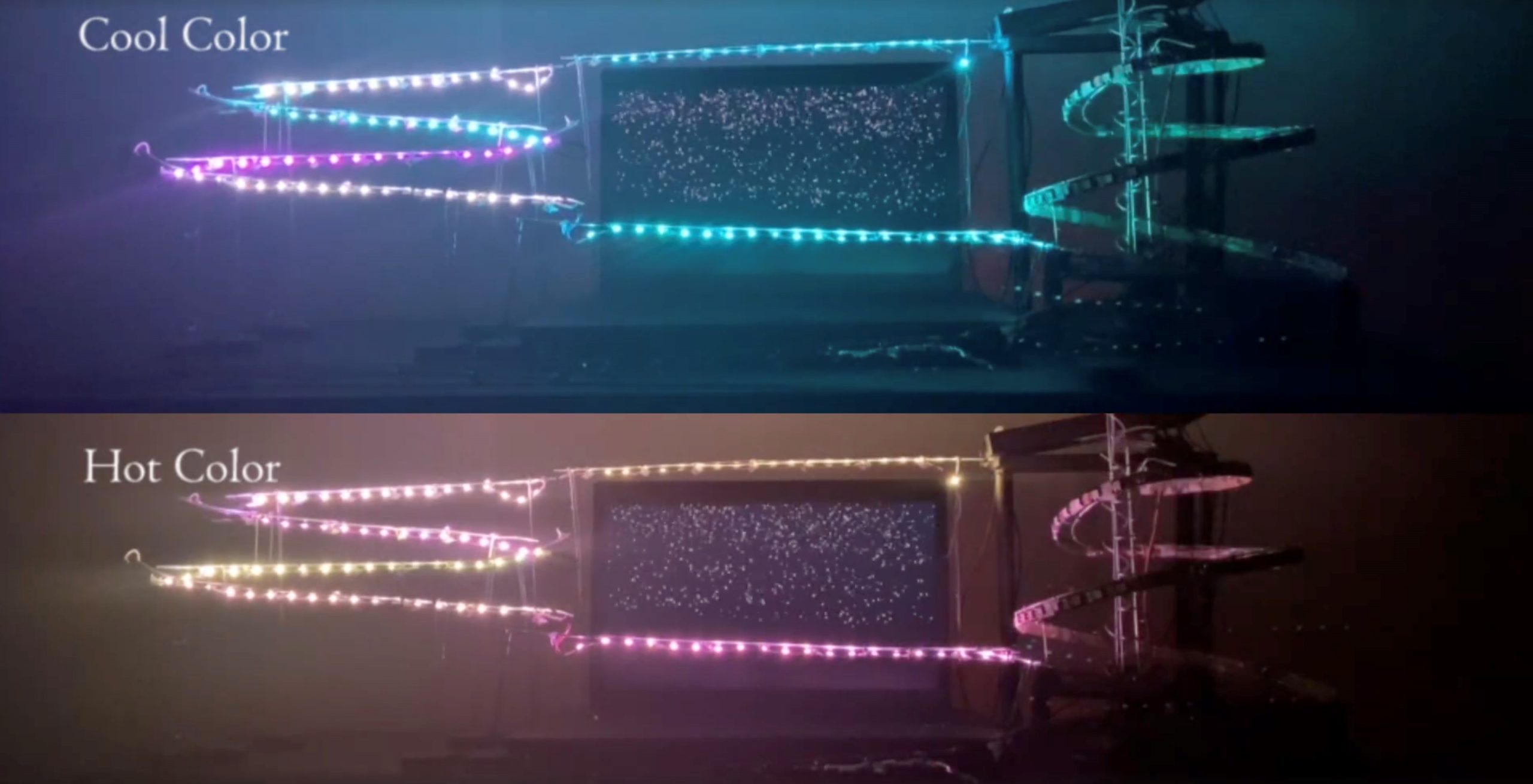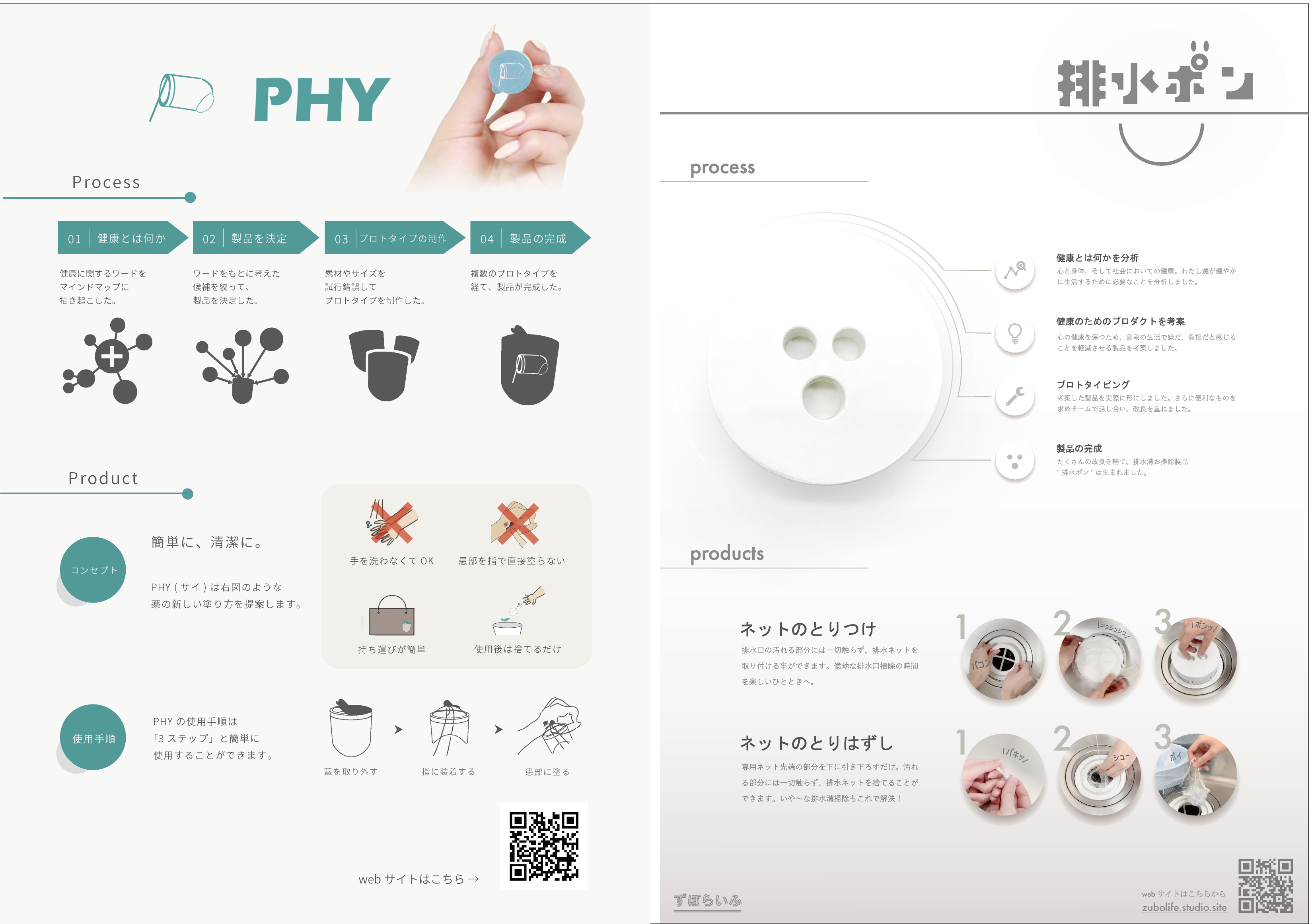Future University Hakodate is a public university based on information science, which opened in 2000. Under the motto of “Open Space, Open Mind”, the university aims to nurture “a high professional capability in Systems Information Science”, “the ability to explore and conceptualize problems supported by research skills and associated attitudes”, “the ability to express information through teamwork and co-creation”, “the ability to learn autonomously and continuously (meta-learning)” and “humanity required for a specialist”.
Undergraduate design education aims to acquire the ideas, knowledge, and techniques necessary to design a human-centered information environment. While integrating various disciplines such as information design, cognitive psychology, sociology, and communication, students will learn the philosophy of constructing an information environment that coexists with people, which is the foundation of today’s society, and the techniques for creating a comfortable information environment. We will nurture human resources who can reveal a new relationship between humans and computers.
The master’s program of the graduate school is divided into five areas, and the area of design is the media design area. The goal is to develop the ability to “participate in the actual social environment, repeatedly discover and create issues together with the people involved and design a new environment”.
In the doctoral program, students will systematically understand the issues in the field of design and present the results of information design that will contribute to the development of academia and industry and explore new theories and methods of information design.
Undergraduate Education
Overview of the Information Design Course
In the Information Design course, students learn theories and techniques for human-centered design of information and everyday environments, from basic to advanced. In addition to the design theories and expression methods that enrich people’s lives in the information society, students learn the latest theories and practices in information science and cognitive science while cultivating the ability to stand at the forefront of information design.
The curriculum is designed to cultivate the following skills as stated in the diploma policy: (1) a high professional capability in Systems Information Science; (2) the ability to explore and conceptualize problems supported by research skills and associated attitudes; (3) the ability to express information through teamwork and co-creation; (4) the ability to learn autonomously and continuously (meta-learning); (5) humanity required for a specialist.
In the first and second years, students will learn practically the importance of the above skills, especially (2), (3), (4), and (5). From the second year onward, students will acquire (1), such as human-centered design and co-creation, in the course’s specialized subject groups, and deepen (2), (4), and (5) in practical situations such as Project-Based Learning and Graduation Research.
①Core Curriculum (for 1st – 4th year students)
In the Core Curriculum, students will acquire a wide range of knowledge that will guide them in their future autonomous activities to promote human development, social participation, understanding of science, technology and the environment, and health preservation.
②Communication Subjects (for 1st and 2nd year students)
The Communication Subjects foster the ability to develop multi-modal and multi-literate communication skills within the contexts of science, engineering and design.
③Common Subjects in each course
In the Common Subjects, the aim is to acquire basic professional skills (computational thinking, mathematical thinking, media literacy). In addition, in the third-year Project-Based Learning, students work in teams to discover issues in the community and society and acquire the ability to devise and implement solutions.
④Information Design Course Subjects (for the 2nd – 4th year students)
In the Information Design course, students acquire the knowledge, methods, and attitudes to tackle problems through repeated lecturers and practical training based on design studies, informatics, and cognitive science. Major subjects include Fundamentals of Information Expression, Information Design, Human Interface, User-Centered Design, Cognitive Psychology, Workplace Theory, and Perceptual Systems Theory. In graduation research, students engage in research on the fundamentals and applications of information design.
Graduate Education
This course aims to provide students with a systematic understanding of design studies, to contribute to the development of academia and industry, to acquire knowledge and research methodologies in design and information design for the creation of new results that include advanced academic content from a broad perspective, and to explore new theories and methods in design and information design.
Overview of the Master’s Program in Media Design
Students learn through common and specialized subject groups to develop the ability to “participate in the real social environment, repeatedly discover and create issues together with the people involved, and design new environments. Each subject combines lectures, exercises, practical training, discussions, and fieldwork to promote independent problem solving and problem identification.
Group of Common Subjects (M1)
Group of Common Subjects offers subjects related to the academic literacy necessary for writing a dissertation. Students learn academic literacy and research ethics applicable not only in Japan but also in international fields.
② Subject Group of Media Design Field (M1-2)
In the subject group of Media Design field, students acquire design methodologies, fundamental techniques of creation and information expression for cutting-edge artifacts using information technology, and the ability to design advanced human-environment relationships by integrating these technologies.
Overview of Doctoral Program
The aims are to contribute to the development of academia and industry by systematically positioning design studies and information design within the field of systems information science and exploring new theories and methods that include advanced academic content from a broad perspective.

Project-Based Learning(Interaction Elements project) 3rd Year
Project-based learning is a unique program at the core of the university, where students from different departments and courses mix and learn together as a team. Students select one project from more than 20 projects. One of the projects is the Interaction Elements project, where students created various prototypes for interaction between people and the environment under the theme of “creating components that shape the future”. The “Pop-up Shelf” in the photo is an example. When you move your fingertip left or right near the bookshelf, the books ripple like a wave in response to the movement.

Fundamentals of Information Expression III 2nd year
In this class, students learn about the necessity of prototyping in design projects through the practice of dynamic media design. In FY2021, each group set objectives such as “introducing Future University at the open campus” and “promoting tourism in Hakodate” and created a prototype of a ” Pythagorean device that allows students to enjoy interaction”.

Information Design II: Product Creation for Crowdfunding
Students clarify the structure of information hidden in products in the real world, derive a new concept, and create a product. They analyzed existing crowdfunding sites and created a product for crowdfunding on the theme of “health”.
2022.3.29

 Return to List
Return to List